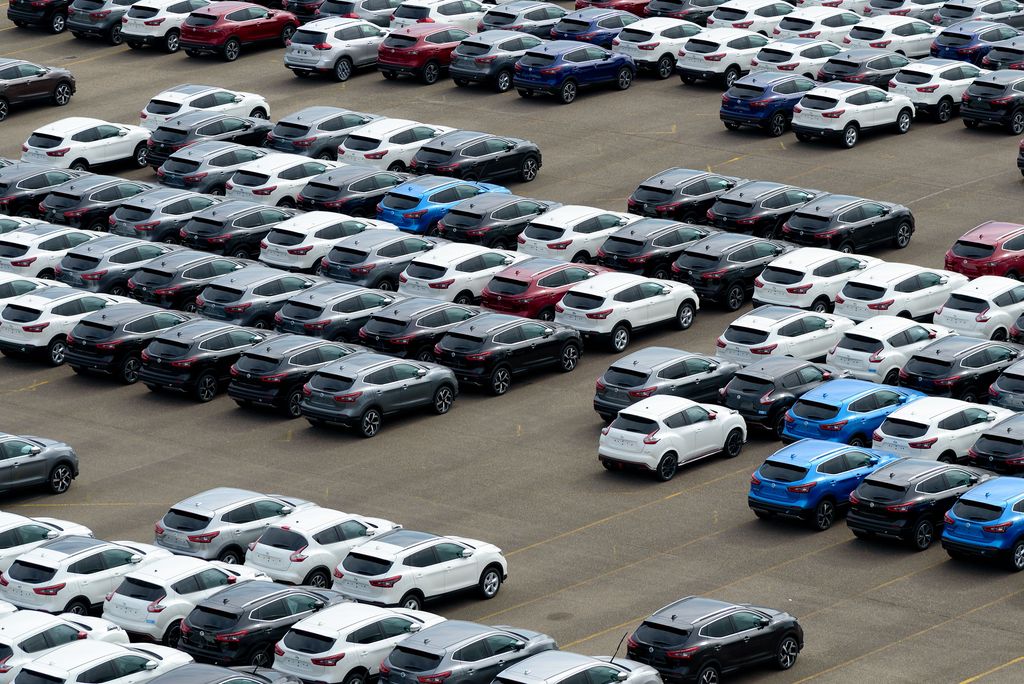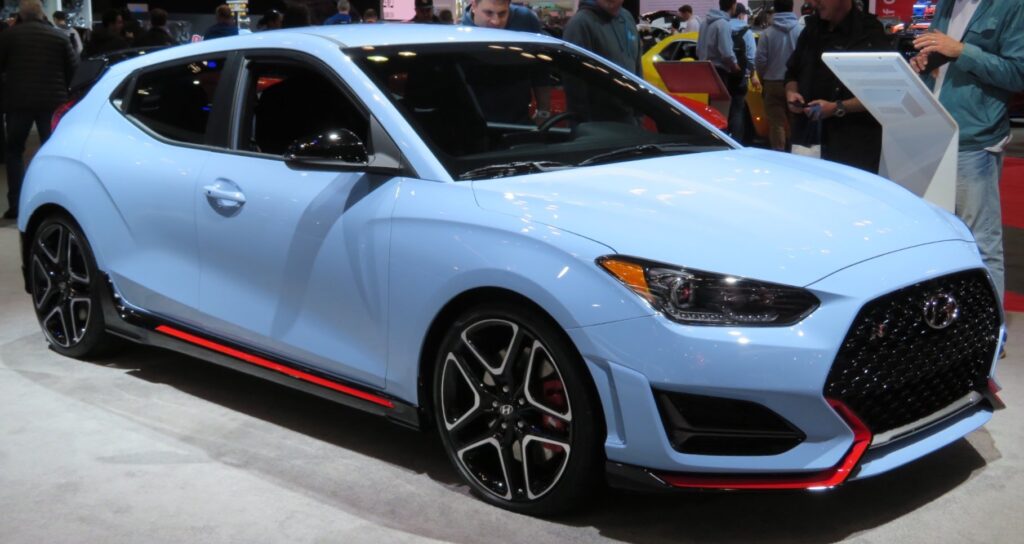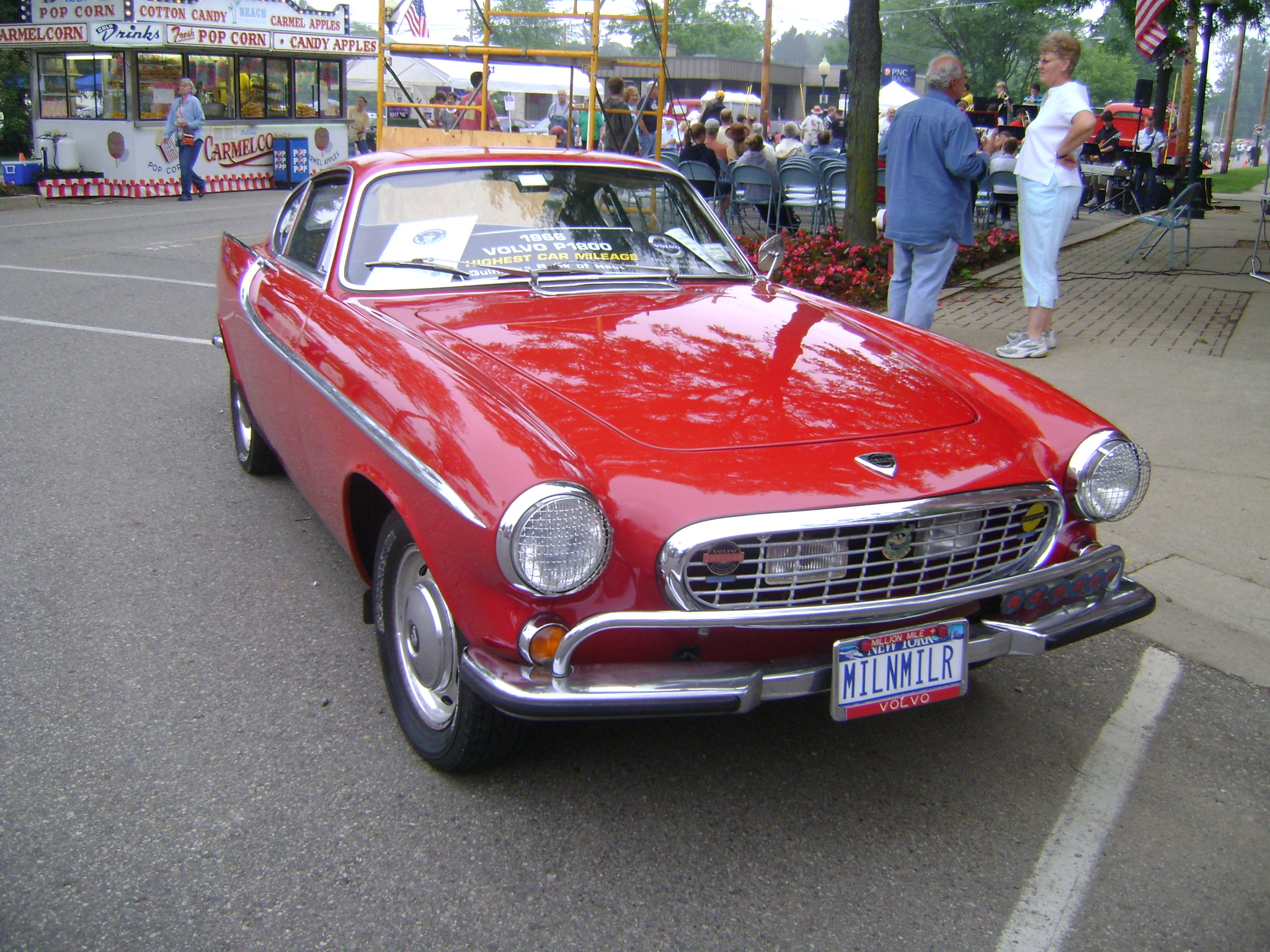
The idea of a car gracefully cruising past the 100,000-mile mark used to be a point of immense pride, a true testament to dependable engineering and diligent maintenance. It signified that you had a reliable partner on the road, a vehicle that was truly giving you your money’s worth. But let’s get real: in today’s world, with car costs steadily climbing amidst substantial inflation and general economic turbulence, exercising caution before investing in a vehicle is more crucial than ever before. You’re not just buying a mode of transport; you’re hoping for a long-term, hassle-free investment in your daily life.
Unfortunately, not every car is built to last this glorious journey gracefully. While some models are absolute champions, consistently hitting the quarter-of-a-million-mile mark (we’re looking at you, Toyotas!), others, despite their initial charm and popularity, start showing serious cracks once the odometer inches towards—or, heaven forbid, passes—that six-figure milestone. These aren’t just minor quirks; we’re talking about fundamental issues that can quickly turn your beloved ride into a financial burden, making you ponder if you truly got “your money’s worth.”
We’ve tapped into the extensive experience of Jacob Carter, proprietor of Engine Rev Up, a blog dedicated to the nitty-gritty of car maintenance and repairs. Carter’s insights, along with findings compiled by GOBankingRates and MyCarMakesNoise, highlight specific vehicle models that “demand more repairs and break down more often, particularly after they surpass the milestone of 100,000 miles.” So, if you’re prioritizing durability and want to side-step a “ticking time bomb,” grab a coffee and get ready, because we’re about to unveil the first seven popular cars that often struggle to go the distance, leaving owners with headache-inducing problems. Forewarned, as they say, is truly forearmed!
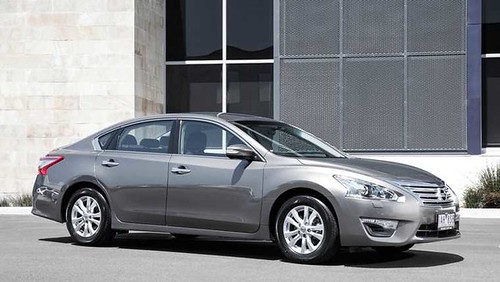
1. **Nissan Altima**The Nissan Altima often shines in initial reviews, presented as a reliable midsize sedan offering comfortable interiors and a suite of advanced safety features. With a starting MSRP around $24,300, it looks like an attractive, economical choice, especially with engine options like a 2.5-liter 4-cylinder and a 3.5-liter V6 promising good fuel economy. Many buyers are drawn to its blend of style and practicality, seeing it as a dependable daily driver for years to come.
However, as Jacob Carter, our resident car guru from Engine Rev Up, points out, “the continuously variable transmission found in numerous Altimas tends to experience premature failure, frequently occurring shortly after reaching the 100,000-mile mark.” This isn’t a small, easily overlooked issue; a failing CVT can lead to incredibly expensive repairs, often making you question the car’s overall value. This problem is so significant that it becomes “one of the most consistent complaints” about the Altima.
It’s not just Carter sounding the alarm. CoPilot for Car Shopping explicitly advises consumers to avoid specific model years, including 2002, 2005, 2009, 2013, and 2016, citing these persistent transmission issues. Looking at the 2002 model year, CarComplaints.com records “1,000+ complaints, and more than a dozen recalls,” highlighting problems like “catalytic converter failure, excessive oil consumption, and exhaust system” among the worst. The Altima’s “build quality also falls short, contributing to a range of mechanical issues over time.”
So, while some Altimas might soldier past the six-digit milestone with careful upkeep, it’s far from a guaranteed smooth ride. What might begin as a budget-friendly commuter can quickly evolve into an “expensive burden,” as the context aptly puts it, demanding an ongoing project of repairs. For true peace of mind and long-term value, the Altima proves to be a considerably risky bet, often failing to deliver on the promise of lasting dependability.
Car Model Information: 2015 Nissan Altima 2.5 S
Name: Nissan Altima
Caption: 2024 Nissan Altima SR (L34; US)
Manufacturer: Nissan
Aka: Nissan Bluebird
Production: 1992–present
Class: Compact car
Predecessor: Nissan Bluebird,Nissan Stanza
ModelYears: 1993–present
Categories: 2000s cars, 2010s cars, 2020s cars, All-wheel-drive vehicles, All Wikipedia articles written in American English
Summary: The Nissan Altima is a mid-size car manufactured by Nissan since 1992. It is a continuation of the Nissan Bluebird line, which began in 1955.
The Altima has historically been larger, more powerful, and more luxurious than the Nissan Sentra but less so than the Nissan Maxima. The first through fourth-generation cars were manufactured exclusively in the United States and officially sold in North and South America, along with the Middle East and Australia. For other markets, Nissan sold a related mid-size sedan called the Nissan Teana which was between the Altima and Maxima in terms of size. In 2013, the Teana became a rebadged version of the fifth-generation Altima.
The name “Altima” was originally applied to a top trim line of the Nissan Leopard for the Japanese market in 1986, and then to the Nissan Laurel Altima mid-size car sold in Central America and the Caribbean before 1992. In 1992, Nissan discontinued the Stanza which was a Nissan Bluebird clone, replacing it with the US-built Altima, while remaining a compact car. The first Altima was produced in June 1992, as a 1993 model. All Altima models for the North American market were built in Smyrna, Tennessee, until June 2004, when Nissan’s Canton, Mississippi plant also began producing the model to meet high demand.
Get more information about: Nissan Altima
Buying a high-performing used car >>>
Brand: Nissan Model: Altima
Price: $8,235 Mileage: 117,517 mi.
Read more about: These 10 Cars Are Secretly Money Pits You Absolutely Need to Avoid as a Driver
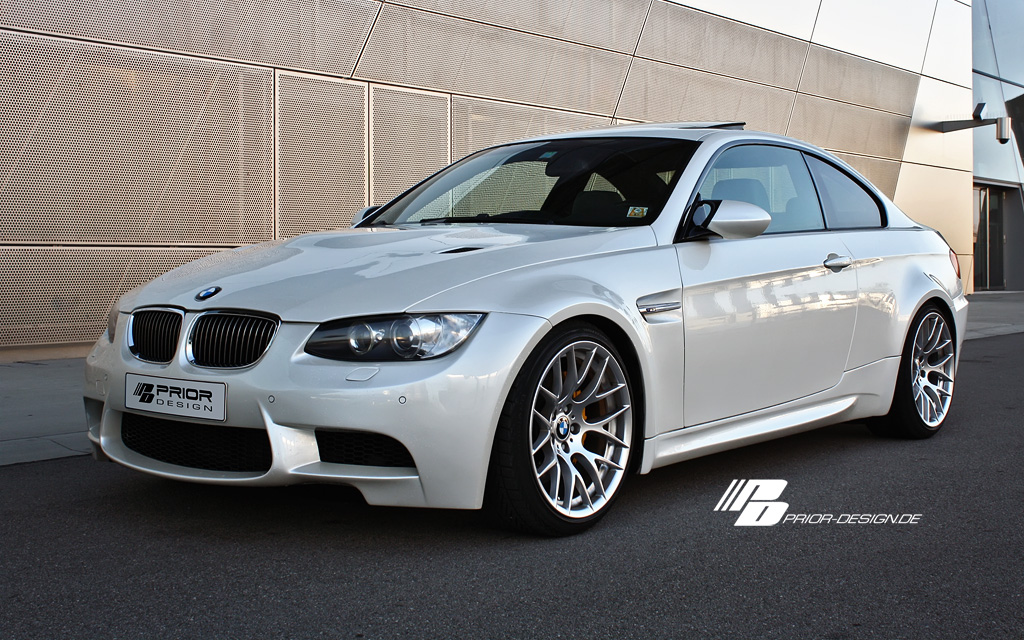
2. **BMW 3 Series**The BMW 3 Series is synonymous with luxury, performance, and precision engineering. It’s a dream car for many, celebrated for its “sporty driving dynamics, upscale interior and innovative technology features.” With a starting MSRP around $41,250, it certainly conveys an image of sophistication and an exhilarating driving experience. Who wouldn’t want a car that delivers such a refined feel and promises that legendary “Ultimate Driving Machine” experience?
Yet, according to Jacob Carter’s extensive experience, the luster of the 3 Series can quickly dull once it crosses into higher mileage territory. These luxury compact cars “demand high maintenance costs, with a significant number of them necessitating engine or electrical repairs around or shortly after reaching 100,000 miles.” This isn’t just about routine service; these are major, often wallet-busting repairs.
The problems typically reported as models age are quite serious. Owners frequently encounter “engine cooling issues, turbo failures, and complex electronic faults.” It’s a stark reminder that while the initial drive is exhilarating, the subsequent demands for investment to keep it on the road can be staggering. Repairing a BMW is rarely cheap—parts and specialized labor often come with a premium price tag, turning expected maintenance into an unexpected financial drain.
For buyers who are seeking not only luxury but also genuine long-term reliability, the BMW 3 Series often struggles to deliver both beyond the 100,000-mile mark. It might be a fantastic car for short-term enjoyment, offering an unparalleled driving thrill, but its “low mileage potential” due to these recurring, costly issues makes it a highly questionable choice for the long haul if you’re looking for dependability that truly lasts.
Car Model Information: 2013 GMC Sierra 1500 SLT
Name: BMW 3 Series
Manufacturer: BMW
Production: 1975–present
Class: Compact executive car
Predecessor: BMW 02 Series
Categories: 1970s cars, 1980s cars, 1990s cars, 2000s cars, 2010s cars
Summary: The BMW 3 series is a line of compact executive cars manufactured by the German automaker BMW since May 1975. It is the successor to the 02 series and has been produced in seven generations.
The first generation of the 3 Series was only available as a 2-door saloon; the model range expanded to include a 4-door saloon, 2-door convertible, 2-door coupé, 5-door estate, 5-door liftback (“Gran Turismo”; discontinued in 2019) and 3-door hatchback body styles. Since 2013, the coupé and convertible models have been marketed as the 4 Series; these styles no longer being included in the 3 Series.
The 3 Series is BMW’s best-selling model line, accounting for around 30% of the BMW brand’s annual total car sales, and has won numerous awards throughout its history. The M version of the 3 series, M3, debuted with the E30 M3 in 1986.
Get more information about: BMW 3 Series
Buying a high-performing used car >>>
Brand: BMW Model: 3 Series
Price: $17,900 Mileage: 106,960 mi.
Read more about: These 10 Cars Are Secretly Money Pits You Absolutely Need to Avoid as a Driver
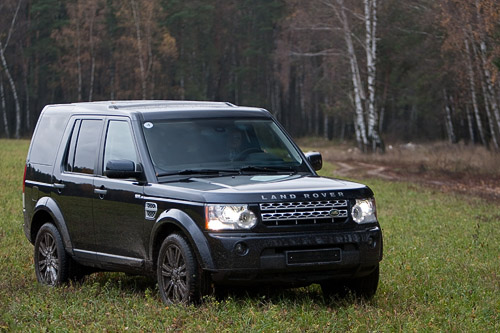
3. **Land Rover Discovery**The Land Rover Discovery exudes an aura of rugged luxury and adventure. It’s a “handsome-looking car” with a starting MSRP of $55,250, promising off-road prowess and a comfortable, upscale experience for discerning drivers. It looks ready to conquer any terrain while still providing a refined ride, making it an appealing choice for families and adventurers alike. The expectation is that a vehicle built for such demanding conditions would naturally be incredibly durable.
However, the reality, as shared by Jacob Carter, is often quite different. The Discovery “has garnered a reputation for encountering problems related to air suspension, electrical anomalies and premature transmission failure.” These aren’t minor glitches; they are significant mechanical failures that often emerge “before the 100,000-mile mark,” cutting any grand adventure plans short.
Adding to the frustration, “maintenance costs for the Discovery are notoriously high, and parts can be hard to find and expensive.” Even what might seem like “routine fixes often require specialist attention,” compounding the financial burden on owners. This means that keeping a high-mileage Discovery on the road can quickly become an exercise in deep pockets and patience.
Despite its luxury features, sophisticated design, and inherent rugged appeal, the Land Rover Discovery simply “isn’t built to endure” the long term without becoming a persistent source of expensive repairs. For those who truly seek dependable performance that extends beyond the initial showroom gleam, this SUV is highlighted as “a gamble not worth taking,” as its reliability often proves to be far less impressive than its looks and initial capabilities.
Car Model Information: 2019 Nissan Rogue SV
Sp: uk
Name: Land Rover Discovery
Caption: 2018 Land Rover Discovery
Manufacturer: Land Rover Ltd.,Jaguar Land Rover
Production: 1989–present
Class: Executive car,Sport utility vehicle
Layout: Front-engine, four-wheel-drive
Categories: All-wheel-drive vehicles, All articles lacking reliable references, All articles with unsourced statements, Articles lacking reliable references from December 2010, Articles with short description
Summary: The Land Rover Discovery is a series of five or seven-seater family SUVs, produced under the Land Rover marque, from the British manufacturer Land Rover, and later Jaguar Land Rover. The series is currently in its fifth iteration (or generation, according to the manufacturer), the first of which was introduced in 1989, making the Discovery the first new model series since the launch of the 1970 Range Rover – on which it was based – and only the third new product line since the conception of the Land Rover (vehicle and brand) by Rover in 1948. The model is sometimes called influential, as one of the first to market a true off-road capable family car.
Although the Range Rover had originally been designed as an everyday four wheel drive car that could be used as both a utility vehicle and a family car, it had progressively moved upmarket through its life to evolve into a luxury vehicle sold at a much higher price point. The Discovery was intended to fulfill the role the Range Rover originally was intended for; a segment which was now dominated by Japanese rivals such as the Nissan Patrol, Mitsubishi Pajero and Toyota Land Cruiser. Although positioned below the Range Rover in the company’s line-up, the vehicle was both longer and higher, offered more room in the back, and optionally also more seats. Space utilization became more sophisticated in later generations, but the series keeps offering seats for seven occupants. Despite originally being sold as an affordable alternative to the Range Rover, the Discovery has also progressively moved upmarket through its successive generations to become a bonafide luxury SUV.
The second Discovery (1998) was called the Series II, and although it featured an extended rear overhang, it was otherwise an extensive facelift, which carried over the 100 in (2,540 mm) wheelbase frame and rigid, live front and rear axles derived from the original Range Rover.
The third generation – succeeding the Series II in 2004 – was either called the Discovery 3 or simply LR3 (in North America and the Middle East). This was a new ground up design, the first all-original design for the Discovery. Although it followed the 2002 third generation Range Rover, also switching to fully independent suspension, it still received a separate, but integrated body and frame (IBF) structure. The fourth generation, as of 2009 – like the series II, was again mainly an update of the new generation – marketed as the Discovery 4, or Land Rover LR4 for North American and Middle Eastern markets.
The fifth generation of the Discovery, introduced in 2017, no longer sports a numeric suffix. Unlike the previous two generations, it now benefits from a unitized body structure, making it lighter than its predecessor.
Get more information about: Land Rover Discovery
Buying a high-performing used car >>>
Brand: Land Rover Model: Discovery
Price: $15,500 Mileage: 92,396 mi.
Read more about: These 10 Cars Are Secretly Money Pits You Absolutely Need to Avoid as a Driver
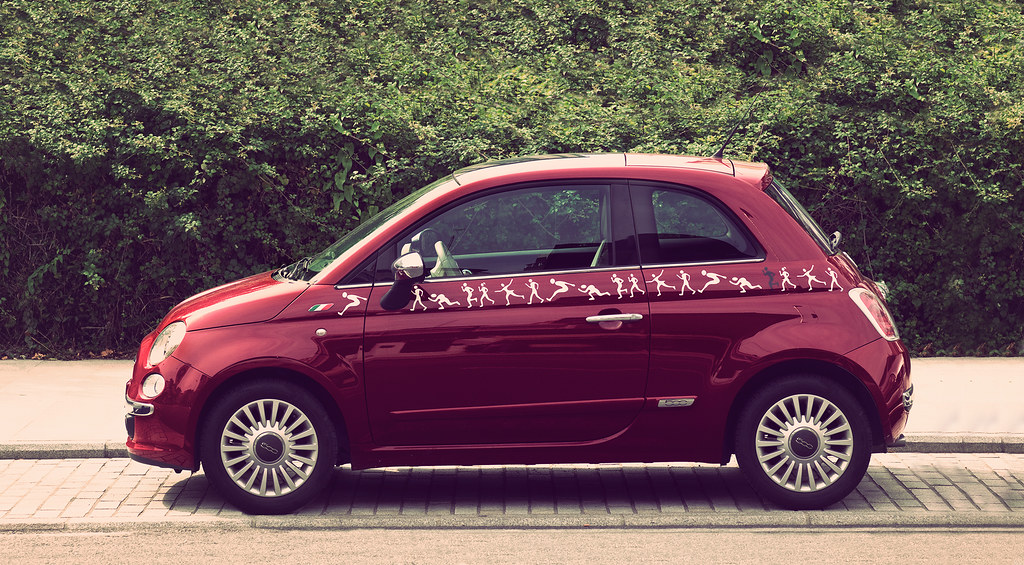
4. **Fiat 500**The Fiat 500 is a compact, stylish city car that absolutely oozes European charm and promises exceptional maneuverability, making it a darling for urban dwellers. With a starting MSRP as low as $16,495, it’s an accessible and adorable choice for those who want personality and style on a budget. It’s distinctive, it’s cute, and it’s certainly not something you’ll mistake for anything else on the road!
Yet, beneath that charming exterior, the Fiat 500 is often plagued by significant issues, particularly as it ages. According to Jacob Carter, this “adorable yet diminutive” car “frequently experiences engine problems, notably oil leaks.” These aren’t just minor drips; they can indicate deeper, more costly underlying issues. What Car? also notes that while it’s “charming and stylish,” reliability issues are definitely “to watch out for.”
And the problems don’t stop there. Beyond oil leaks, owners report “frequent transmission problems, electrical issues, and engine failures” that become particularly evident “after 100,000 miles.” The limited space within the engine compartment further complicates things, as it “contributes to the steep cost of repairs,” turning seemingly simple fixes into expensive undertakings. Imagine dealing with “rattles, squeaks, and trim pieces falling off,” alongside issues with “the rear brake, the steering column, airbags, and power steering.”
So, while the Fiat 500 might win hearts with its unique flair and nimble handling, its long-term durability is often a significant concern. The car’s charm is consistently “overshadowed by these persistent and expensive mechanical problems,” making it a less than ideal choice for long-term ownership if you value reliability and want to avoid constant trips to the mechanic. It’s a short-term fling, not a lasting partner.
Car Model Information: 2012 FIAT 500 Lounge
Name: Fiat 500
Caption: 1970 Fiat 500 L
Aka: Puch 500
Manufacturer: Fiat Automobiles
Production: 1957–1975,3,893,294 units
Assembly: Turin,Desio
Designer: Dante Giacosa
Class: City car
BodyStyle: ubl
Layout: Rear-engine, rear-wheel drive layout
Doors: Suicide door,Car door#Conventional
Related: Autobianchi Bianchina,NSU/Fiat Weinsberg 500,Vignale Gamine,Autobianchi Giardiniera
Engine: Cubic centimetre,499 cc I2,594 cc I2
Transmission: Manual transmission
Wheelbase: {{convert,1840,mm,in,1,abbr=on
Abbr: on
Length: 2970 mm
Width: 1320 mm
Height: 1320 mm
Weight: 499 kg
Predecessor: Fiat 500 “Topolino”
Successor: Fiat 126,Fiat 500 (2007)
Sp: uk
Categories: 1960s cars, 1970s cars, All articles with unsourced statements, Articles containing Italian-language text, Articles with short description
Summary: The Fiat 500 (Italian: Cinquecento, pronounced [ˌtʃiŋkweˈtʃɛnto]) is an economy / city car that was manufactured and marketed by Fiat Automobiles from 1957 until 1975. It was sold as a two-door semi-convertible or saloon car and as a three-door panel van or estate car.
Launched as the Nuova (new) 500 in July 1957, as a successor to the 500 “Topolino”, it was an inexpensive and practical small car. Measuring 2.97 metres (9 feet 9 inches) long, and originally powered by a rear-mounted 479 cc two-cylinder, air-cooled engine, the 500 was 24.5 centimetres (9.6 inches) smaller than Fiat’s 600, launched two years earlier, and is considered one of the first purpose-designed city cars.
In 1959, Dante Giacosa received a Compasso d’Oro industrial design prize for the Fiat 500. This marked the first time a Compasso d’Oro was awarded to an automotive manufacturer.
Get more information about: Fiat 500
Buying a high-performing used car >>>
Brand: Fiat Model: 500
Price: $5,950 Mileage: 91,698 mi.
Read more about: These 10 Cars Are Secretly Money Pits You Absolutely Need to Avoid as a Driver
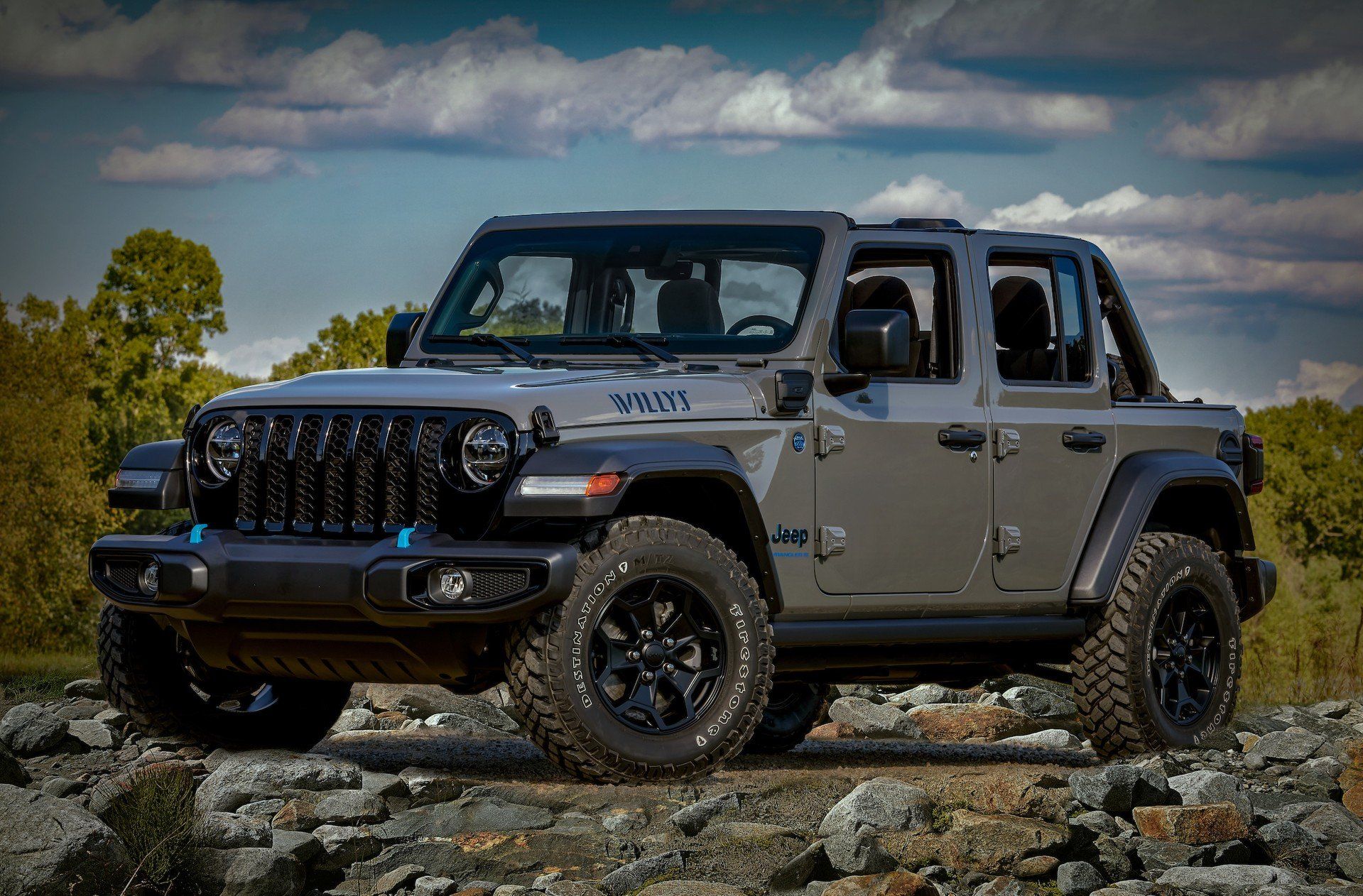
5. **Jeep Wrangler**The Jeep Wrangler stands tall as an iconic off-road SUV, instantly recognizable for its rugged design and exceptional capabilities in tackling virtually any terrain. It’s the ultimate vehicle for adventure seekers, promising unparalleled freedom and an “enjoyable off-roading experience.” With a starting MSRP around $29,995, it appeals to those who prioritize raw capability and a distinctive, go-anywhere spirit.
However, the very elements that make it a fantastic off-roader can become significant liabilities in the long run. Jacob Carter highlights that “while it offers an enjoyable off-roading experience, it’s susceptible to rust, steering and suspension problems that necessitate repair work.” These aren’t merely cosmetic issues; they can directly impact the vehicle’s safety and driving dynamics.
As the odometer climbs past the 100,000-mile mark, the Wrangler often starts to reveal more “significant mechanical issues.” Reports frequently cite “transmission failures, engine troubles, and suspension issues” as common problems that crop up. This means that while it excels in its natural habitat of trails and unpaved roads, daily driving and the accumulation of mileage can lead to a host of expensive and recurring problems.
Despite its enduring popularity among adventure enthusiasts, the Jeep Wrangler’s long-term reliability can be a significant concern for many owners. The sheer frequency of these major mechanical issues means that while it might look tough and act tough off-road, maintaining its dependability for hundreds of thousands of miles without it becoming a “money pit” is a challenge that many owners ultimately face.
Car Model Information: 2017 Jeep Wrangler Unlimited Sport
Name: Jeep Wrangler
Caption: Jeep Wrangler Unlimited, Sahara edition
Manufacturer: Jeep
Class: Compact SUV
Production: 1986–present
Predecessor: Jeep CJ
Layout: Front-engine, rear-wheel-drive layout,rear-wheel drive
Chassis: Body-on-frame
Related: AIL Storm
Categories: 1980s cars, 1990s cars, 2000s cars, 2010s cars, All-wheel-drive vehicles
Summary: The Jeep Wrangler is a series of compact and mid-size four-wheel drive off-road SUVs manufactured by Jeep since 1986, and currently in its fourth generation. The Wrangler JL, the most recent generation, was unveiled in late 2017 and is produced at Jeep’s Toledo Complex.
The Wrangler is a direct progression from the World War II Jeep, through the CJ (Civilian Jeeps) produced by Willys, Kaiser-Jeep, and American Motors Corporation (AMC) from the mid-1940s through the 1980s. Although neither AMC nor Chrysler (after it purchased AMC in 1987) have claimed that the Wrangler was a direct descendant of the original military model — both the CJ Jeeps and the conceptually consistent Wrangler, with their solid axles and open top, have been called the Jeep model as central to Jeep’s brand identity as the rear-engine 911 is to Porsche.
Similar to the Willys MB and the CJ Jeeps before it, all Wrangler models continue to use a separate body and frame, rigid live axles both front and rear, a tapering nose design with flared fenders, a fold-flat windshield and can be driven without doors. Also, with few exceptions, they have part-time four-wheel drive systems, with the choice of high and low gearing, and standard open bodies with removable hard or soft tops. However, the Wrangler series was specifically redesigned to be safer and more comfortable on-road, to attract more daily drivers, by upgrading its suspension, drivetrain, and interior, compared to the CJ line. The suspension on all Wranglers included trackbars and anti-roll bars, and, from the 1997 TJ onwards, front and rear coil springs instead of the previous leaf springs.
From 2004 on, the Wrangler has been complemented with long-wheelbase versions, called Wrangler Unlimited. 2004-2006 models were longer versions with 2 doors. In 2004 only automatic transmission-equipped “Unlimited” versions were sold. In 2005 both an automatic and manual 6-speed (NSG-370) were offered. Since 2007, the long-wheelbase Wranglers were four-door models, offering over 20 in (508 mm) more room. By mid-2017 the four-door models represented three-quarters of all new Wranglers on the market.
Get more information about: Jeep Wrangler
Buying a high-performing used car >>>
Brand: Jeep Model: Wrangler
Price: $20,725 Mileage: 111,103 mi.
Read more about: These 10 Cars Are Secretly Money Pits You Absolutely Need to Avoid as a Driver
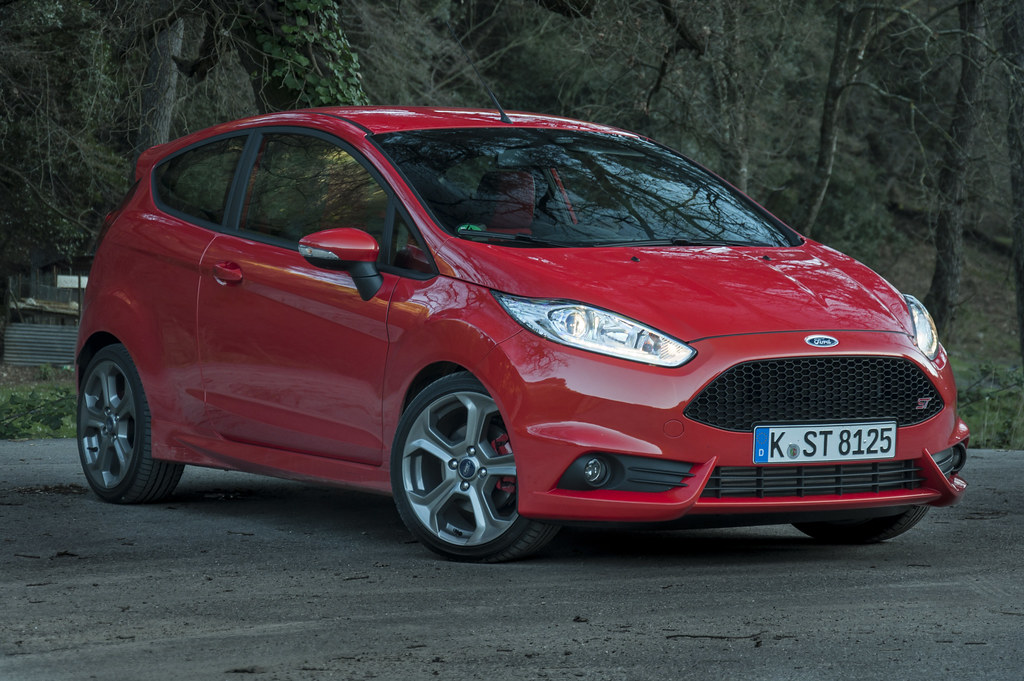
6. **Ford Fiesta**The Ford Fiesta is often lauded as a compact car that delivers agile handling and impressive fuel efficiency, making it a perennial favorite for urban drivers and budget-conscious commuters. With a starting MSRP around $15,490, it positioned itself as an economical subcompact option that was both practical and fun to drive. For many, it represented a smart, affordable choice for navigating crowded city streets and saving on gas.
However, the appeal of its initial affordability and zippy performance tends to diminish significantly as the miles add up. Jacob Carter warns that despite its economical nature, the Fiesta “holds a track record of encountering transmission problems and electrical issues, so it might be one to avoid” if you’re hoping for long-term reliability. These are not minor issues; transmission failures, in particular, can be incredibly costly to diagnose and repair, quickly eroding any initial savings.
The severity of these problems, especially concerning its PowerShift transmission in models from 2012 to 2016, is “infamous,” with issues that “tend to worsen after 100,000 miles.” Beyond the transmission woes, the Fiesta is also “prone to engine issues and electrical faults.” This means that what started as a seemingly smart purchase can rapidly transform into a financial burden requiring frequent and expensive trips to the service center.
In essence, while the Ford Fiesta offers good handling and fuel efficiency in its younger years, its long-term durability is a significant drawback. The “reliability takes a hit with higher mileage,” making it a car that struggles to provide lasting peace of mind. If you’re looking for a vehicle that can truly go the distance without becoming a continuous source of frustration and repair bills, the Fiesta’s track record suggests it might be best to give it a wide berth.
Car Model Information: 2014 Ford Fiesta SE
Name: Ford Fiesta
Manufacturer: Ford Motor Company
Production: June 1976 – July 2023
Class: Supermini
BodyStyle: hatchback
Layout: Front-engine, front-wheel-drive layout
Successor: Ford Puma (crossover)
ModelYears: 1978–1980, 2011–2019 (North America)
Categories: 1980s cars, 1990s cars, 2000s cars, 2010s cars, 2020s cars
Summary: The Ford Fiesta is a supermini car that was marketed by Ford from 1976 to 2023 over seven generations. Over the years, the Fiesta has mainly been developed and manufactured by Ford’s European operations, and had been positioned below the Escort (later the Focus).
Ford had sold over 15 million Fiestas from 1976 to July 2011, making it one of the best-selling Ford nameplates behind the Escort and the F-Series. It has been manufactured in the United Kingdom, Germany, Spain, Brazil, Argentina, Venezuela, Mexico, Taiwan, China, India, Thailand, and South Africa.
The Fiesta was discontinued in 2023, after over 22 million units had been made. The final Ford Fiesta rolled off the production line on 7 July 2023.
Get more information about: Ford Fiesta
Buying a high-performing used car >>>
Brand: Ford Model: Fiesta
Price: $5,999 Mileage: 100,069 mi.
Read more about: These 10 Cars Are Secretly Money Pits You Absolutely Need to Avoid as a Driver
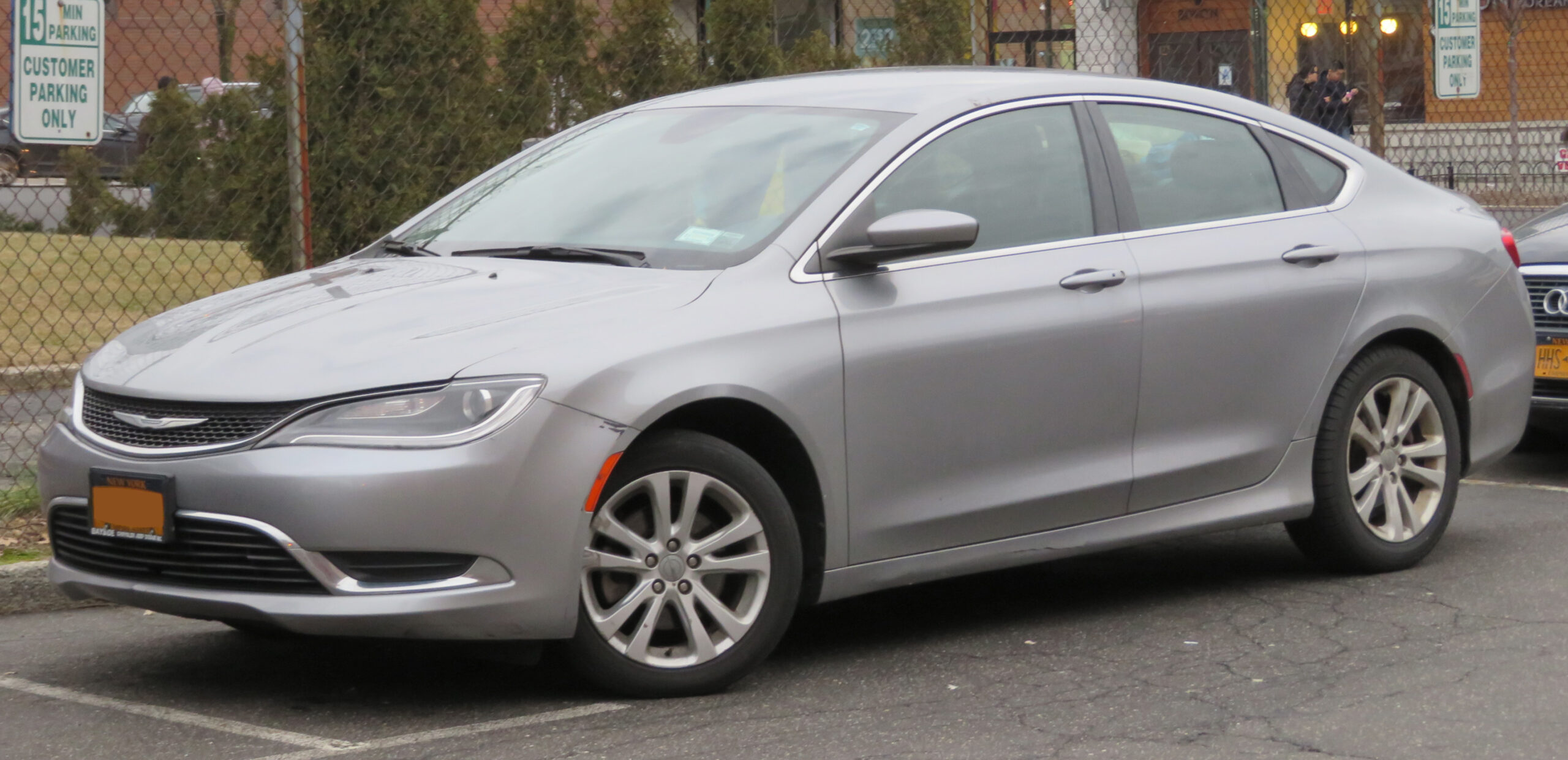
7. **Chrysler 200**The Chrysler 200 entered the market as a midsize sedan aiming to offer a compelling blend of style and practicality, characterized by its sleek design and comfortable interior. With a starting MSRP of $22,220, it presented itself as an attractive option for buyers seeking a stylish and comfortable daily driver, seemingly offering good value for its segment. It promised a smooth ride and a touch of sophistication without breaking the bank.
However, according to Jacob Carter’s observations, the Chrysler 200 often struggles significantly with long-term dependability. He notes “a notable frequency of engine, transmission and electrical repairs required at relatively low mileage levels.” This is a critical point: problems aren’t just cropping up after 100,000 miles; they can start to manifest much earlier in its lifespan, making it a concern for even moderately used vehicles.
These aren’t inexpensive or simple fixes. Engine troubles, transmission failures, and electrical system malfunctions are among the most complex and costly repairs a car owner can face. The accumulation of such significant issues means that what initially appears to be a practical and stylish purchase can quickly become an unexpected “financial drain” and a source of considerable frustration, significantly eroding its overall value proposition.
Despite its appealing aesthetics and comfortable cabin, the Chrysler 200 lacks the robust long-term reliability needed to confidently navigate the road for hundreds of thousands of miles without major headaches. Its propensity for “frequent breakdowns and high maintenance costs tarnish the ownership experience,” ensuring that for drivers hoping to invest in a luxury sedan that endures, this model often disappoints as the miles begin to pile on. It’s a prime example of a car that looks good on paper, but fails to deliver on the promise of lasting durability.
Car Model Information: 2015 Chrysler 200 S
Name: Chrysler 200
Manufacturer: Chrysler
Production: 2010–2016
ModelYears: 2011–2017
Assembly: Sterling Heights, Michigan
Class: Mid-size car
Sp: us
Predecessor: Chrysler Sebring
Categories: 2010s cars, All articles with dead external links, All articles with unsourced statements, Articles with dead external links from July 2020, Articles with permanently dead external links
Summary: The Chrysler 200 is a mid-size sedan that was manufactured and marketed by Chrysler from model years 2011 to 2017 across two generations in four-door sedan and two-door convertible (first generation only) body styles.
The 200 nameplate debuted on the 200C, a prototype hybrid vehicle shown at the 2009 North American International Auto Show in Detroit and based on the Chrysler 300. The 200C concept was engineered to accept either traditional gasoline, hybrid or full-electric powertrains.
Get more information about: Chrysler 200
Buying a high-performing used car >>>
Brand: Chrysler Model: 200
Price: $7,200 Mileage: 122,275 mi.
Read more about: These 10 Cars Are Secretly Money Pits You Absolutely Need to Avoid as a Driver
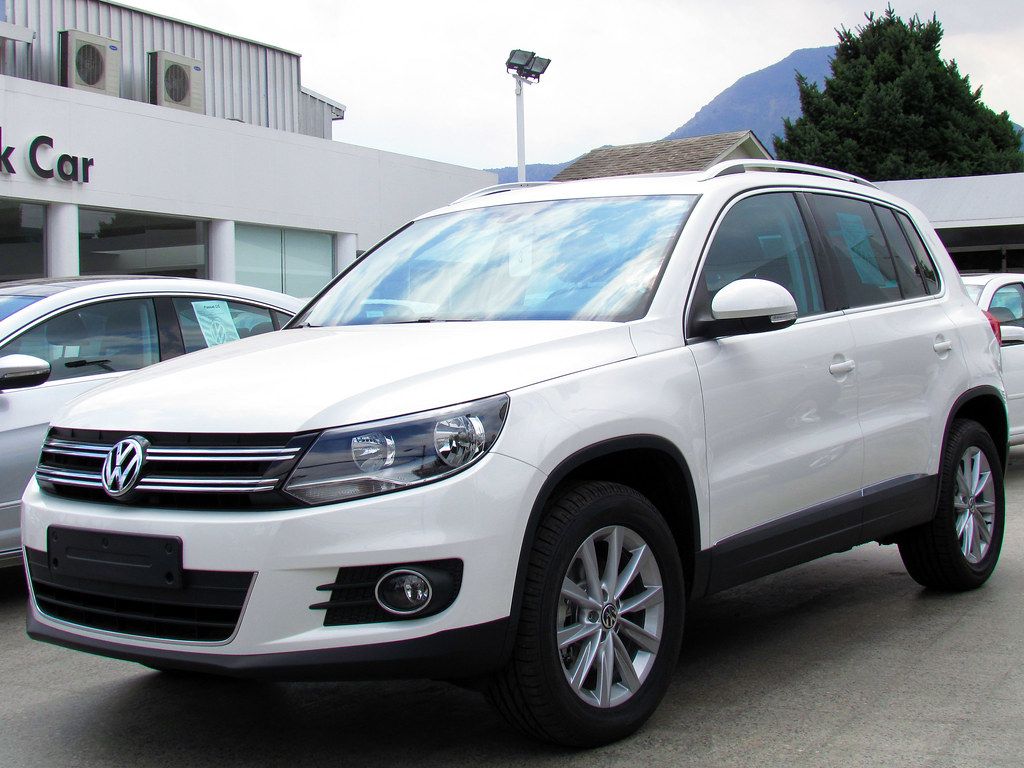
8. **Volkswagen Tiguan**The Volkswagen Tiguan often catches the eye with its sleek, stylish design and a promise of a comfortable interior, making it a compelling choice for drivers who want a touch of elegance combined with everyday practicality. It presents itself as a well-rounded SUV, capable of handling daily commutes with grace while still offering that quintessential German engineering feel.
However, once that odometer starts ticking towards the big 1-0-0-K, the Tiguan can reveal a less appealing side. Jacob Carter from Engine Rev Up points out that this stylish SUV has “gained a reputation for facing costly transmission issues.” We’re not talking about a minor hiccup here; these are significant problems that often start “shortly after crossing the 100,000-mile threshold.”
Imagine investing in a seemingly dependable vehicle, only to face a major transmission overhaul that quickly eats into your savings. These aren’t just frustrating; they can be incredibly expensive, transforming your chic SUV into a budget black hole. For an owner looking for long-term value and hassle-free driving, the Tiguan’s tendency for transmission woes can be a serious deal-breaker, proving that beauty isn’t always built to last.
Car Model Information: 2014 Volkswagen Tiguan Auto SEL
Name: Volkswagen Tiguan
Manufacturer: Volkswagen
Layout: 4motion
Class: Compact crossover SUV
BodyStyle: Sport utility vehicle
Chassis: Unibody
Production: 2007–present
ModelYears: 2009–present (North America)
Categories: 2010s cars, 2020s cars, All-wheel-drive vehicles, Articles with short description, CS1 Indonesian-language sources (id)
Summary: The Volkswagen Tiguan (German pronunciation: [ˈfɔlksˌvaːɡn̩ ˈtiːɡu̯aːn]) is a sport utility vehicle produced by German manufacturer Volkswagen since 2007, sitting between the smaller T-Roc and the larger Touareg in the company’s crossover SUV range. The first generation was based on the PQ46 platform, while the second generation, released in 2016, utilizes the Volkswagen Group MQB A2 platform. It is generally considered to be a medium-sized SUV in Europe, while in North America it is considered to be a compact crossover SUV.
The name Tiguan is a portmanteau of the German words Tiger (“tiger”) and Leguan (“iguana”) and won a naming contest by German car magazine publisher Auto Bild—from a field of names that also included Namib, Rockton, Samun and Nanuk.
As of the spring of 2020, six million units had been sold worldwide, with 910,926 units being manufactured in 2019 alone, making the Tiguan the best-selling car overall in the Volkswagen Group. It was also the best-selling SUV in Europe.
Get more information about: Volkswagen Tiguan
Buying a high-performing used car >>>
Brand: Volkswagen Model: Tiguan
Price: $9,865 Mileage: 94,008 mi.
Read more about: These 10 Cars Are Secretly Money Pits You Absolutely Need to Avoid as a Driver
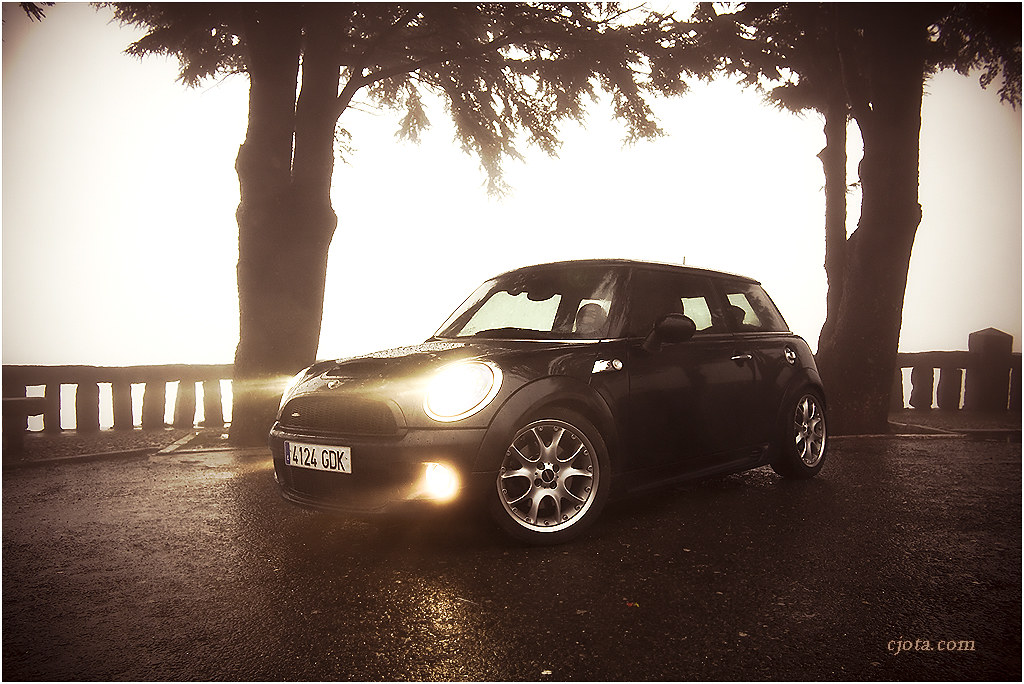
9. **Mini Cooper**Who doesn’t love a Mini Cooper? With its compact, distinctive design and go-kart-like handling, it’s a car that screams personality and fun. It stands out from the crowd, promising a unique driving experience that many find absolutely irresistible. Fans genuinely adore its quirky aesthetic and spirited performance, making it a true icon of automotive individuality.
But, as Jacob Carter wisely cautions, beneath that adorable exterior, the Mini Cooper can hide a “dark underbelly.” He explains that it’s “plagued by persistent concerns involving oil leaks, turbo failures, suspension and electrical problems.” These aren’t just minor annoyances; they’re often complex issues that can quickly turn your charming ride into a regular at the service center.
If you’re eyeing a used Mini, CarBuzz advises you to “ditch it when it approaches the 100,000-mile mark” and definitely “hit the brakes to avoid the 2005, 2010, and 2014 model years.” Why? Because these years are notorious for problems like “oil leaks, timing chains, power steering boxes, and turbochargers.” These aren’t simple fixes, and they tend to pop up right when you’re expecting smooth sailing.
MyCarMakesNoise further corroborates this, noting that Mini Coopers “struggle with reliability as they age” and that “after 100,000 miles, owners frequently report issues with the engine, cooling system, and transmission.” The kicker? The “high cost of parts and labor for repairs further diminishes the appeal of owning a high-mileage Mini Cooper.” So, while it’s a blast to drive, that “unique car choice” can quickly become a unique financial burden.
Car Model Information: 2024 MINI Hardtop Cooper S
Sp: uk
Caption: 1959 Morris Mini-Minor (first one built)
Name: Mini
Aka: Austin 850,Rover Mini,Austin Cooper,Austin Mini,Austin Partner,Austin Seven,Innocenti Mini,Leyland Mini,Morris 850,Morris Mascot,Morris Mini Minor,Riley Elf,Wolseley 1000 (South Africa),Wolseley Hornet
Layout: Front-engine, front-wheel-drive layout
Manufacturer: British Motor Corporation,British Leyland,Rover Group
Production: 1959–2000 (5.38 million)
Class: City car
BodyStyle: sedan (car),convertible,Station wagon,sedan delivery,coupe utility
Engine: BMC A-series engine,Straight-four engine
Designer: Alec Issigonis,John Sheppard (car designer)
Transmission: 4-speed manual,AP automatic transmission,5-speed manual (optional extra on some later models)
Length: cvt,cvt,cvt
Width: cvt
Height: cvt
Weight: cvt
Wheelbase: cvt,cvt
Related: Mini Moke,Austin Metro,Innocenti Mini,Mini Wildgoose,Mini Marcos
Successor: Austin Metro,Mini Hatch
Assembly: Panmure, New Zealand
Categories: 1960s cars, 1970s cars, 1980s cars, 1990s cars, 2000s cars
Summary: The Mini is a very small two-door, four-seat car, produced for four decades over a single generation, with many names and variants, by the British Motor Corporation (BMC) and its successors British Leyland and the Rover Group, and finally (briefly) under BMW ownership. Minis were built as fastbacks, estates, convertibles, and various other body styles. Minus a brief 1990s hiatus, from 1959 into 2000, an estimated 5.38 million of all variations combined were built, and the Mini’s engines also powered another 2 million Mini Metros, though the Mini eventually outlasted its successor.
Initially, the Mini was marketed under the Austin and Morris names, as the Austin Seven and Morris Mini-Minor; the Austin Seven was renamed Austin Mini in 1962 and Mini became a marque in its own right in 1969. Retrospectively, the car is known as the “Classic Mini” to distinguish it from the modern MINI family of vehicles produced since 2001 by German carmaker BMW, who took ownership of the Mini name following the sale of Rover Group in 2000.
This distinctive two-door car was designed for BMC by Sir Alec Issigonis. Its space-saving transverse engine and front-wheel drive layout – allowing 80% of the area of the car’s floorpan to be used for passengers and luggage – influenced a generation of car makers. The front-wheel-drive, transverse-engine layout were used in many other “supermini” style car designs such as Honda N360 (1967), Nissan Cherry (1970), and Fiat 127 (1971). The layout was also adapted for larger subcompact designs. In 1999, the Mini was voted the second-most influential car of the 20th century, behind the Ford Model T, and ahead of the Citroën DS and Volkswagen Beetle. It is also considered an icon of 1960s British popular culture.
The Mini Mark I had three major UK updates: the Mark II, the Clubman, and the Mark III. Within these was a series of variations, including an estate car, a pick-up, a van, and the Mini Moke, a jeep-like buggy. The performance versions, the Mini Cooper and Cooper “S”, were successful as both race and rally cars, winning the Monte Carlo Rally in 1964, 1965, and 1967. The Mini was manufactured in England at the Longbridge plant in Birmingham located next to BMC’s headquarters and at the former Morris Motors plant at Cowley, as well as in Australia (Victoria Park/Zetland BMC Australia factory) and later also in Spain (Authi), Belgium, Italy (Innocenti, as the Innocenti Mini), Chile, Malta, Portugal, South Africa, Uruguay, Venezuela, and Yugoslavia (IMV). In 1980, British Leyland launched the Mini’s follow-up, the Austin Metro, however the Mini outlasted it and continued to be produced at Longbridge until October 2000.
Get more information about: Mini
Buying a high-performing used car >>>
Brand: Mini Model: Cooper
Price: $25,499 Mileage: 10,501 mi.
Read more about: Don’t Buy This Car: 10 Used Vehicles and Types to Avoid in 2025 for Savvy Buyers
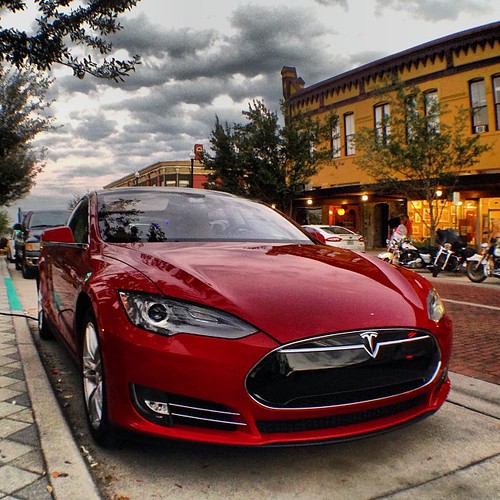
10. **Tesla Model S**The Tesla Model S is practically a symbol of automotive innovation, known globally for its breathtaking acceleration, sleek futuristic design, and cutting-edge technology. It promised to revolutionize electric vehicles, delivering a premium experience that was both thrilling and environmentally conscious. For many, it’s the epitome of modern luxury and performance.
However, even with all that groundbreaking tech, there’s a significant long-term consideration that can come as quite a shock. Jacob Carter highlights that the Model S “demands a substantial investment for battery pack replacement,” a critical component that often needs attention “around or shortly after the 100,000-mile mark.”
Unlike a traditional car where engine repairs can be costly, a battery pack replacement in an EV is on a whole different level of expense. This isn’t just about topping up fluids; it’s a major, multi-thousand-dollar overhaul that can dramatically impact the car’s overall value and the owner’s wallet. So, while the instant torque and silent acceleration are incredible, be prepared for a potentially massive bill down the line if you plan on keeping your Model S for the ultra-long haul.
Car Model Information: 2013 GMC Sierra 1500 SLT
Name: Tesla Model S
ModelYears: 2013–present
Alt: A front-three quarter view of a gray Model S
Caption: #2016–2019: First major update
Designer: Franz von Holzhausen
Weight: cvt
Height: cvt
Width: cvt
Length: cvt
Wheelbase: cvt
ElectricRange: cvt
Battery: kWh,lithium-ion battery
Motor: Unbulleted list
Transmission: Reduction drive
Related: Tesla Model X
Layout: Rear-motor, rear-wheel drive,Dual-motor, all-wheel-drive,Tri-motor, all-wheel-drive layout
BodyStyle: liftback,sedan (automobile)
Class: Full-size car
Assembly: Unbulleted list
Production: June 2012 – present
Manufacturer: Tesla, Inc.
Sp: us
Chassis: Unibody
Categories: 2020s cars, All-wheel-drive vehicles, All Wikipedia articles written in American English, All articles containing potentially dated statements, Articles containing potentially dated statements from 2025
Summary: The Tesla Model S is a battery-electric, four-door full-size car produced by the American automaker Tesla since 2012. The automaker’s second vehicle and longest-produced model, the Model S has been described as one of the most influential electric cars in the industry. Car and Driver named it one of the best cars of the year in 2015 and 2016. Its various accolades include the Motor Trend Car of the Year Award in 2013.
Tesla started developing the Model S around 2007 under the codename WhiteStar. Initially, Henrik Fisker was appointed as the lead designer for the WhiteStar project; after a dispute with Elon Musk, Tesla’s CEO, Fisker was replaced by Franz von Holzhausen. By 2008, von Holzhausen had designed what would become the production Model S’s exterior. Tesla unveiled a prototype of the vehicle in March 2009 in Hawthorne, California. In 2010, Tesla acquired a facility in Fremont, California, to produce the Model S, which was previously owned by General Motors and Toyota. Series manufacture of the car officially began at the Tesla Fremont Factory in June 2012. Tesla carried out the final assembly for European markets at its facilities in Tilburg, Netherlands, between 2013 and 2021.
The Model S typically uses either one or initially two alternating current induction motors; since 2019, dual-motor versions have used a permanent magnet motor in the front, though the high-performance Model S Plaid’s three motors are permanent magnet units by default. Constructed mostly of aluminum, the Model S shares 30 percent of its components with the Model X—a crossover SUV that was introduced in 2015. The Model S has undergone several updates during its production, the most prominent ones occurring in 2016 and 2021. These updates have usually included modifications to the motor, such as changes to power or torque, revised exterior elements, and refreshed interior features. One such change included the 2015 introduction of Tesla Autopilot—a partial vehicle automation advanced driver-assistance system.
In 2015, the Model S was the world’s best-selling plug-in electric vehicle. In 2012, it was included on Time’s list of the Best Inventions of the Year, and the magazine later included it on its list of the 10 Best Gadgets of the 2010s in 2019. In 2014, The Daily Telegraph described the Model S as a “car that changed the world”. Road & Track argued that, with the introduction of the Plaid and features such as the yoke steering wheel, Tesla managed to turn the Model S into “perhaps one of the worst [cars in the world]”.
Get more information about: Tesla Model S
Buying a high-performing used car >>>
Brand: Tesla Model: Model S
Price: $17,900 Mileage: 106,960 mi.
Read more about: 10 Cars That Seem Like a Steal But Are Really Money Pits Waiting to Happen
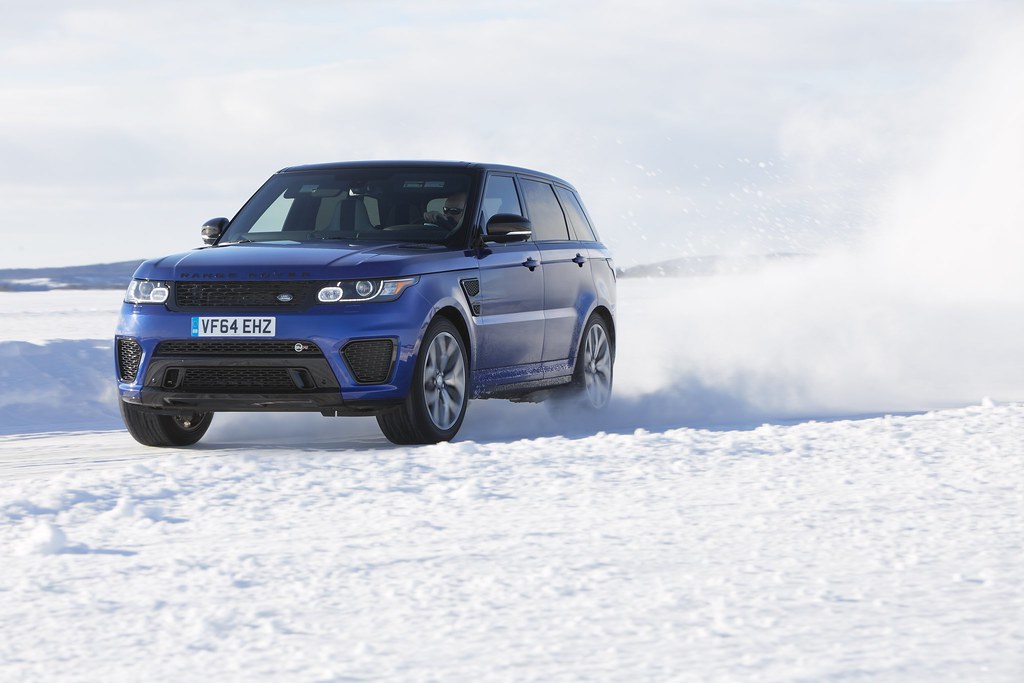
11. **Range Rover**When you think Range Rover, you envision luxury, sophistication, and unparalleled off-road capability. This brand has cultivated a loyal following over decades, celebrated for its blend of high-end comfort, commanding presence, and ability to conquer virtually any terrain. It’s truly a vehicle that exudes prestige and promises an extraordinary driving experience, whether on city streets or rugged trails.
Yet, for all its undeniable allure and rugged good looks, Range Rovers “aren’t usually known as the most reliable vehicles,” especially as they age. Specific model years, like those from “2012 to 2021, for instance, have problems with the engine, the diesel particulate filter, and air suspension.” These aren’t just small nuisances; they’re often complex systems that can lead to significant headaches.
While dedicated maintenance can extend the life of any vehicle, the context clearly states that “the odds of a Range Rover exceeding 100,000 miles without major issues aren’t great.” What might start as an investment in luxury can swiftly become an investment in a continuous stream of premium-priced repairs. So, if you’re prioritizing long-term dependability over sheer brand prestige, the Range Rover might be a surprisingly risky bet for your wallet.
Car Model Information: 2013 GMC Sierra 1500 SLT
Name: Range Rover (L460)
Manufacturer: Jaguar Land Rover
ModelCode: L460
Designer: Gerry McGovern
Production: 2022–present
Assembly: Solihull
Class: Full-size SUV
BodyStyle: Sport utility vehicle
Layout: Front-engine, four-wheel-drive layout
Platform: Jaguar Land Rover car platforms#MLA-Flex
Related: Range Rover Sport#L461
Engine: Petrol engine,Straight-six engine,twin-turbo,Diesel engine,3.0 L twin-turbo I6,3.0 L twin-turbo I6 MHEV,Petrol engine,3.0 L turbo I6 PHEV
Motor: ubl
Abbr: on
Drivetrain: class=nowrap,Mild hybrid,Plug-in hybrid,P510e/P550e)
Transmission: ZF 8HP transmission
Battery: Kilowatt-hour,Lithium-ion battery
Wheelbase: class=nowrap,{{convert,2997,mm,in,1,abbr=on
Length: class=nowrap,{{convert,5052,mm,in,1,abbr=on
Width: class=nowrap,{{convert,2047,mm,in,1,abbr=on
Height: 1870 mm
Weight: [object Object]
Sp: uk
Predecessor: ubl
Categories: All-wheel-drive vehicles, All articles containing potentially dated statements, All articles with unsourced statements, Articles containing potentially dated statements from 2023, Articles with short description
Summary: The Land Rover Range Rover (L460), generally shortened to Range Rover, is the fifth generation of the Range Rover, a range of mid- and full-size luxury crossovers produced by Land Rover. It was revealed in London on 26 October 2021. The car is available in two different wheelbases, and the vehicle is available in guises consisting of petrol, petrol mild hybrid, petrol plug-in hybrid, and diesel mild hybrid. A seven-seater option was available slightly after launch.
Get more information about: Range Rover (L460)
Buying a high-performing used car >>>
Brand: Range Rover Model: Range Rover
Price: $17,900 Mileage: 106,960 mi.
Read more about: These 10 Cars Are Secretly Money Pits You Absolutely Need to Avoid as a Driver
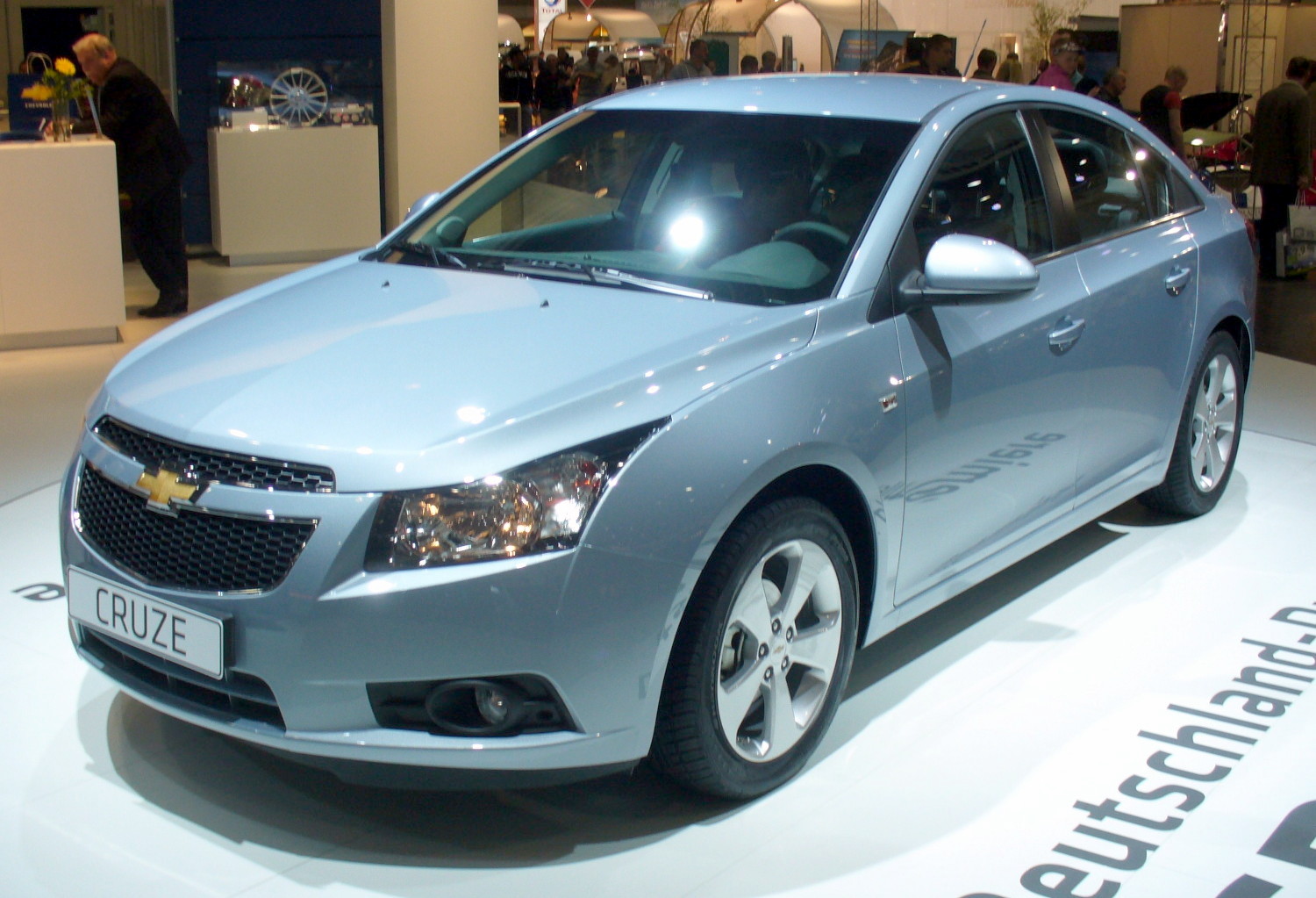
12. **Chevrolet Cruze**The Chevrolet Cruze often stands out as an affordable sedan that’s easy on the gas, boasting an impressive fuel economy potentially “around 48 mpg.” It presents itself as a practical and economical daily driver, offering a comfortable ride that makes commutes feel a little less taxing. For many, it represents a smart, budget-friendly choice in the compact car segment.
However, the shine of its initial affordability can quickly dull once the miles start to pile up. Car Time warns that if you’re looking for a vehicle that “won’t drain your wallet after the odometer reaches 100,000 miles, there are better options.” They specifically advise avoiding “2011-2014” model years due to a laundry list of issues.
We’re talking about serious mechanical frailties here: “transmission failure, intake manifold issues, faulty shifting, coolant leaks, overheating problems, loss of power, and more.” MyCarMakesNoise echoes these concerns, adding “turbocharger failures” and “electrical issues” to the mix. It’s a stark reminder that while the Cruze might deliver a comfortable ride and good fuel economy early on, its “durability over long distances is a significant drawback,” turning potential savings into unexpected repair bills.
Car Model Information: 2014 Chevrolet Cruze 1LT
Name: Chevrolet Cruze
Caption: 2017 Chevrolet Cruze LT sedan
Manufacturer: General Motors
Aka: unbulleted list
Production: unbulleted list
ModelYears: 2011–2019 (North America),2026 (Middle East)
Class: Compact car
Layout: Front-engine, front-wheel drive
Predecessor: unbulleted list
Successor: unbulleted list
Categories: 2010s cars, 2020s cars, ANCAP small family cars, All articles containing potentially dated statements, All articles with dead external links
Summary: The Chevrolet Cruze is a compact car produced by General Motors from 2008 through 2023. It was designated as a globally developed, designed, and manufactured four-door compact sedan, complemented by a five-door hatchback body variant from 2011, and a station wagon in 2012. The Cruze replaced several compact models, including the Chevrolet Optra which was sold internationally under various names, the Chevrolet Cobalt sold exclusively in North America, and the Australasian-market Holden Astra.
The Cruze was released in 2008 for the South Korean market as the Daewoo Lacetti Premiere prior to the adoption of its international name in 2011, when the Daewoo brand was discontinued. In Australasia, the model was sold between 2009 and 2016 as the Holden Cruze. In 2016, the Cruze sedan was restyled and renamed for the Australasian market as the Holden Astra Sedan, as a sedan complement to the Holden Astra family.
Due to the market shift towards SUVs and decreasing sales, the Cruze has been gradually phased out. Production of the Cruze in South Korea ended in 2018 as part of restructuring of GM Korea, which in turn ceased supply of the Holden Astra Sedan to Australasia. In the United States and Mexico, production ended in 2019, while production in China ended in 2020. Production continued in Argentina until 2023. It was replaced by the Monza in China, which is known as the Cavalier in Mexico.
In 2025, the Cruze was revived as a rebadged Chevrolet Monza for the Middle East.
Previously, the nameplate has been used for a version of a subcompact hatchback car produced under a joint venture with Suzuki from 2001 to 2007, and was based on the Suzuki Ignis.
Get more information about: Chevrolet Cruze
Buying a high-performing used car >>>
Brand: Chevrolet Model: Cruze
Price: $7,791 Mileage: 88,975 mi.
Read more about: Don’t Buy This Car: 10 Used Vehicles and Types to Avoid in 2025 for Savvy Buyers
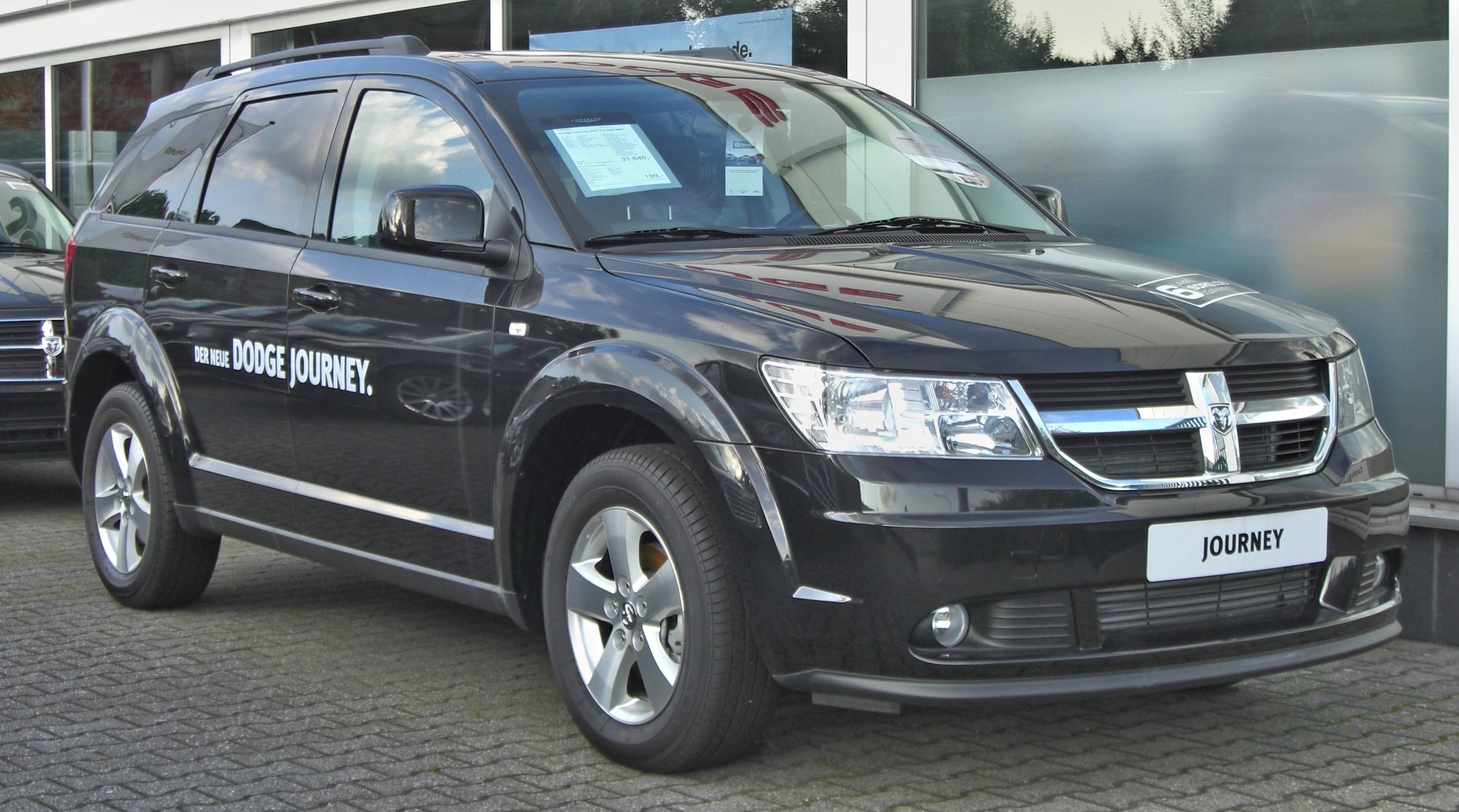
13. **Dodge Journey**The Dodge Journey certainly has an appealing facade, marketed as a family-friendly, budget-conscious SUV with a spacious interior and convenient features. It looked like a solid choice for those needing ample room without breaking the bank, offering practicality that seemed perfect for everyday family life and those adventurous road trips.
But hold onto your travel mugs, because the Journey’s reliability often fails to live up to its name, especially once it passes the 100,000-mile mark. MyCarMakesNoise notes that it “struggles with reliability after 100,000 miles,” with owners frequently reporting major issues that turn those long journeys into frequent pit stops.
CarBuzz points out that certain model years are particularly troublesome, advising to “steer clear of the 2009, 2010, and 2012 model years.” These vehicles are commonly plagued by “brake, electrical, drivetrain, and interior accessory issues.” Furthermore, the consensus from the context is “frequent complaints about premature engine and transmission failures,” along with “electrical issues and weak overall build quality.”
This isn’t just about a few isolated incidents; these are “chronic mechanical failures” that mean the Journey is “better suited for short drives than long-term use.” It might promise to be the perfect road trip companion, but in reality, it often becomes “more of a stop-and-fix vehicle.” So, if you’re looking for a durable, dependable SUV that truly completes the journey, this one often falls short.
Car Model Information: 2018 Dodge Journey SE
Name: Dodge Journey
Caption: 2012 Dodge Journey
Manufacturer: Dodge
Aka: Fiat Freemont,Dodge JC (Japan),Dodge JCUV (China)
Production: 2008–2020
ModelYears: 2009–2020,2011–2015 (Freemont)
Assembly: Toluca, Mexico
Designer: Ryan Nagode
Class: Mid-size crossover SUV
BodyStyle: SUV
Platform: Mitsubishi GS platform
Related: Chrysler 200,Chrysler Sebring,Dodge Avenger
Layout: Front-engine, front-wheel-drive layout
Engine: ubl
Transmission: Ultradrive#40TES/41TES
Wheelbase: 2890 mm
Abbr: on
Order: flip
Length: 192.4 in
Width: 72.2 in
Height: 66.6 in
Weight: 3818 lb
Predecessor: Fiat Ulysse,Fiat Croma
Successor: Dodge Journey (2021)
Categories: 2010s cars, 2020s cars, All-wheel-drive vehicles, All articles with dead external links, All articles with unsourced statements
Summary: The Dodge Journey is a mid-size crossover SUV manufactured and marketed by Fiat Chrysler Automobiles’ Dodge brand for model years 2009 to 2020 over a single generation, with a facelift for the 2011 model year. The Journey was styled by Ryan Nagode, and was marketed globally in both left- and right-hand drive, including as the Fiat Freemont.
Internally identified as the JC49, the Journey shares FCA’s global D-segment platform with the Dodge Avenger and a nearly identical wheelbase to the outgoing short-wheelbase (SWB) Dodge Caravan.
Having debuted at the 2007 Frankfurt Motor Show, the Journey subsequently appeared at the 2009 Frankfurt Motor Show. All models were manufactured in Mexico at FCA’s Toluca Assembly facility, with just over 1.1 million manufactured before production ended in 2020.
Get more information about: Dodge Journey
Buying a high-performing used car >>>
Brand: Dodge Model: Journey
Price: $10,995 Mileage: 134,942 mi.
Read more about: Don’t Fall for the Hype: The 15 Cars That Look Absolutely Stunning But Drive Terribly
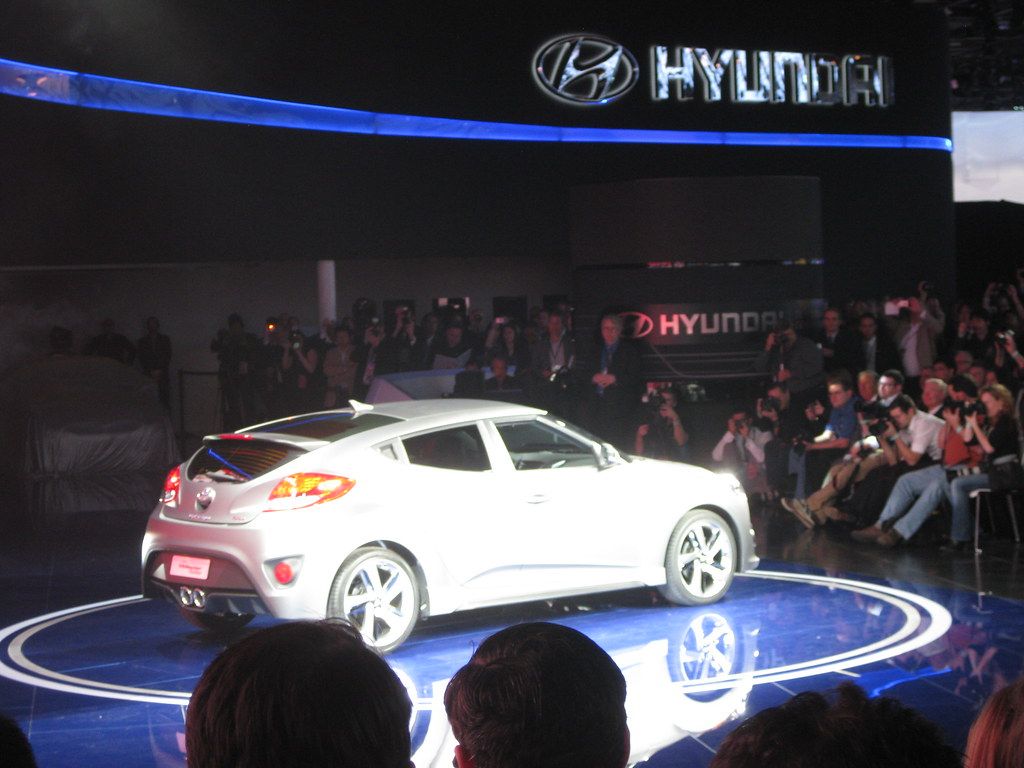
14. **Hyundai Veloster**The Hyundai Veloster truly captures attention with its sporty styling and that distinctive three-door layout – it’s a compact car with a unique flair you definitely won’t mistake for anything else on the road. It promises a fun, engaging, and unique driving experience, making it a head-turner for those who crave a bit of individuality in their ride.
However, behind that cool facade, the Veloster’s mechanical reliability often proves to be a significant disappointment. CoPilot for Car Shopping recommends consumers “skip the 2012-2017 model years” specifically due to issues with “the engine and interior accessories.” This isn’t just about post-100K woes; problems can start much earlier.
The consensus is clear: many owners report “serious issues with the engine and transmission before reaching 100,000 miles.” We’re talking about “faulty clutches, inconsistent build quality, and early powertrain failures” that significantly “undermine its potential as a long-term daily driver.” What begins as a “fun to drive” experience can swiftly “become more frustrating over time.”
Repair costs, unfortunately, “can accumulate quickly, making it difficult to justify continued ownership.” So, while the Veloster might be a blast for a short-term fling and an eye-catching statement, for those “who prioritize durability over design quirks,” this energetic hatchback often isn’t the “dependable choice you’re hoping for past six digits.”
***
Car Model Information: 2012 Hyundai Veloster Base
Name: Hyundai Veloster
Manufacturer: Hyundai Motor Company
Production: 2011–2022
Class: Sport compact car
Layout: Front-engine, front-wheel-drive layout
BodyStyle: hatchback
Predecessor: Hyundai Tiburon
ModelYears: 2012–2022
Assembly: Ulsan
Categories: All Wikipedia articles in need of updating, All articles with unsourced statements, Articles containing Korean-language text, Articles with short description, Articles with unsourced statements from May 2018
Summary: The Hyundai Veloster (Korean: 현대 벨로스터, romanized: Hyeondae Belloseuteo) is a compact car first produced in 2011 by Hyundai, with sales beginning in South Korea on March 10, 2011, and in Canada and the United States since the fall of 2011. In South Korea, it was marketed under Hyundai’s ‘Premium Youth Lab’. It was unveiled on January 10, 2011, at the Detroit Auto Show, and fills the void left when Hyundai discontinued the Hyundai Tiburon after the 2008 model year.
The car differs from most other hatchbacks with its asymmetrical door configuration, featuring one large door on the driver side and two smaller doors on the passenger side. This configuration is more common on commercial vehicles and minivans.
Get more information about: Hyundai Veloster
Buying a high-performing used car >>>
Brand: Hyundai Model: Veloster
Price: $8,245 Mileage: 83,462 mi.
Read more about: 15 Vehicles Drivers Wish They Never Bought: An In-Depth Look at Buyer’s Remorse Magnets for Informed Consumers
So, there you have it – a candid look at popular cars that, despite their initial charm, features, or brand prestige, tend to struggle significantly once they cross that crucial 100,000-mile mark. Jacob Carter’s invaluable insights, along with findings from GOBankingRates and MyCarMakesNoise, consistently underscore a critical truth: a car’s true value isn’t just in its showroom appeal, but in its ability to stand the test of time without becoming a money pit. In an era where every dollar counts and vehicle longevity is more vital than ever, being “forewarned is truly forearmed.” When you’re ready to invest in your next ride, choose wisely – your wallet and your peace of mind will thank you for picking a dependable partner for the long road ahead, rather than a ticking time bomb waiting to explode with repair bills.

